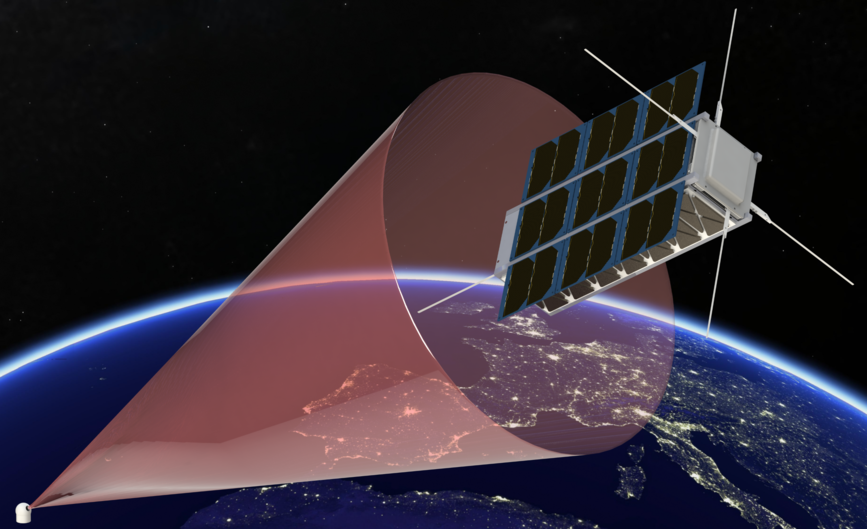Just recently, a multi-million dollar space project culminated in the first successful quantum connection between ground and a satellite: Chinese quantum satellite "Micius" created a quantum-secure key with several ground stations, one of which was operated by scientists of IQOQI in Graz. While this experiment was without question an enormous scientific achievement, the effort that had to put in was no less enormous. To enable quantum space missions with a lower financial and temporal threshold, IQOQI scientists of Dr. Rupert Ursin’s group have put forward a design and feasibility study for substantially smaller quantum satellites.
In cooperation with the department of aerospace engineering of FH Wiener Neustadt and Grenoble’s university space center (CSUG), this design suggests the use of a tiny nanosatellite, a so-called CubeSat. Since its dimension is standardized to consist of multiples of 10 cm cubes, many CubeSats can be sent to space in a single rocket, splitting the cost between different users. The Quantum-CubeSat (“Q³Sat”) proposed by IQOQI consists of only three such cubes, reducing the launch costs to about 300,000 €. Although its functionality is limited compared to Micius, its design would also allow for absolutely secure quantum key distribution (QKD), which is the main goal of current quantum missions.
The main difference to previous approaches is an “uplink” design. This means that the satellite works as a receiver rather than a sender, collecting quantum states of light sent up to it from a optical ground station (OGS). In this configuration, the signal beam experiences strong atmospheric widening already at the beginning of its path. Therefore, less photons hit the tiny 10 cm receiver, which is one of the reasons why previous designs concerned themselves with downlinks. However, an uplink allows for simpler and much cheaper design, since a receiving apparatus can be made space-proof more easily. Additionally, keeping the highly complex sending apparatus on ground has the advantage of more flexibility. This is because different QKD protocols can be implemented by changing the sender source of photons, while using the same receiver design.
The Q³Sat uplink design is enabled firstly by improved photon source designs with very high pair rates and secondly by current developments in CubeSat angular control, i.e. its orientation in space. This control is extremely important because the ground area which the satellite “sees” through its telescope should be as small as possible. This is to block out stray light and noisy signal. However, if this visible area is very small, the Q³Sat also needs to be aligned precisely, or otherwise it won’t see the OGS at all. To put it in numbers: Our Q³Sat will be stable within 0.006° when pointing at the ground station 1000 kilometers away, while moving with nearly 30.000 kilometers per hour.
The detailed Q³Sat design and feasibility study can be readily used as a template for nanosatellite-QKD and also gives a detailed analysis all components, trade-offs, beam calculations and link losses which are useful for a wide range of other satellite experiments.

Kommentare (0)
Keine Kommentare gefunden!